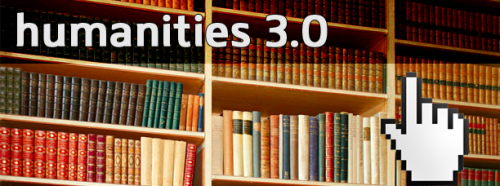Don't Know Your XML from Your OCR? A Digital Humanities Site for the Rest of Us

We spend a lot of time in this space surveying the current landscape of the digital humanities and perhaps even more time peering into the future of the field and asking ourselves, "What's next?". On the whole, that's probably not a bad approach to an area of scholarship that seems both so full of potential and, at the same time, so aware of its potential and thus, rather permanently fixated on the "new" and the "next".
But in this week's blog, we will leave--for the moment--the bleeding edge and its discontents and address a group that seems to be increasingly left by the wayside as the digital humanities plunge ahead into the perpetual next. We want to take a moment to highlight a recently launched website that caters to the uninitiated and the curious, the new graduate students and the old traditionalists, the still-great majority of humanists typified by the scholar who, as one of the site's creators puts it, "doesn’t know what XML stands for, has only vaguely heard of Zotero, and is puzzled as to how Twitter would ever be useful for an historian."
Despite it's tongue-in-cheek title, Stanford's Humanities 3.0: Tooling Up for Digital Humanities site is not a new techier-than-thou desitination site for the digital humanities avant garde. On the contrary, the site was devised with an eye to inclusion and has been designed as "a starting place, an entryway for scholars interested in beginning to explore the possibilities for digital tools, programs, and methods to empower and enhance their scholarship in the humanities."
Tooling Up, the product of a collaboration between the Spatial History Project and the Computer Graphics Lab at Stanford and the direction of historian Jon Christensen, is organized as a series of discussion-enabled "chapters" that, taken together, are meant to serve as something of a primer on the digital humanist's methods and tools. The first two installments explore the creation and maintenance of a virtual identity and the essentials of working with digital archives. Absent the glitz and thin air of the excellent but not necessarily instructive Humanities 2.0 series currently running in the New York TImes, the new Stanford initiative--if it continues to be well-executed--stands to address a real need that exists outside of the DH community while also promoting the flow of vital new blood into that community as it continues to march ahead.